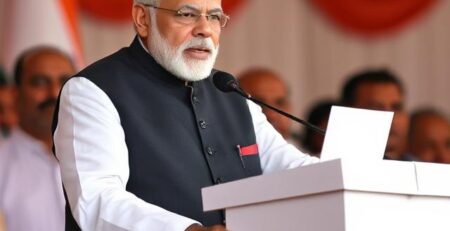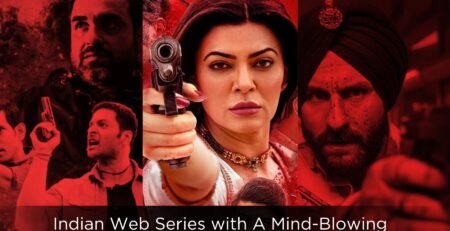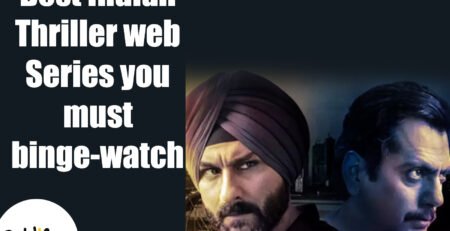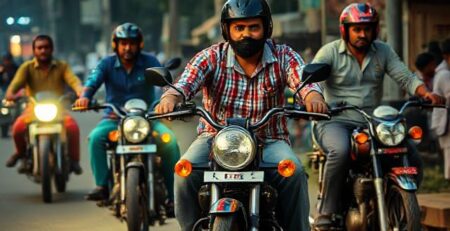Kantara Chapter I Movie Review (2025) – A Mythological Epic Redefined
Rating: ★★★★★ 5/5
Kantara Chapter I is not just a sequel or prequel—it’s a cinematic journey that elevates Indian mythological storytelling to an entirely new level. Directed by the multi-talented Rishab Shetty and produced under the banner of Hombale Films, this film brings an extraordinary blend of mythology, folklore, culture, and high-octane drama that is rarely seen in contemporary Indian cinema. From the very first frame, Kantara Chapter I establishes itself as a visual spectacle and an emotional rollercoaster that grips audiences from start to finish.
Plot Summary: A Divine Tale of Faith, Power, and Betrayal
The story of Kantara Chapter I is set in the sacred land of Kantara, a mystical region deeply rooted in culture, tradition, and belief. The locals consider this land divine, believing it to be protected by an omnipotent deity whose presence permeates every corner of the sacred forest. However, the peace and harmony of this holy land are disrupted by external forces seeking to exploit its divine powers for personal gain.
The narrative beautifully balances the mythological elements with grounded human emotions. It explores themes of devotion, loyalty, greed, and the clash between spiritual sanctity and worldly desires. As besiegers attempt to claim Kantara for their own, the story unfolds a series of conflicts, betrayals, and heroic acts that showcase the eternal struggle between righteousness and malevolence.
Rishab Shetty’s storytelling shines in the way he layers the narrative. The first half of the film introduces the cultural and mystical setting, blending subtle humor, romance, and folklore into the storyline. Key moments before the climax, especially in the pre-interval sequences, deliver high tension, creating an immersive cinematic experience that leaves the audience on the edge of their seats.
Cast and Performances: Stellar Acting That Elevates the Story
The success of Kantara Chapter I is as much due to its storytelling as it is to its ensemble cast. Each actor delivers performances that feel authentic, grounded, and emotionally resonant.
- Rishab Shetty as the protagonist effortlessly carries the film on his shoulders. His portrayal is a masterclass in balancing humor, action, emotion, and gravitas. He embodies his character with conviction, making every scene memorable. His timing in action sequences and dialogues stands out, and his connection to the cultural roots of Kantara adds depth to the narrative.
- Rukmini Vasanth shines as the female lead, delivering a performance that is both strong and nuanced. Her role provides emotional weight and romantic texture to the story, complementing Shetty’s energy with subtlety and elegance.
- Jayaram brings intensity to his character, portraying loyalty and moral conflict with finesse. His presence elevates several pivotal sequences, especially in the climactic moments.
- Gulshan Devaiah stands out as the antagonist, portraying a slipshod yet formidable ruler whose greed and treachery disrupt the divine harmony. His performance is layered and menacing, bringing a sense of real danger to the plot.
Supporting actors, including key members of the ensemble, deliver consistent performances that ensure the story’s cultural and mythological elements are convincingly brought to life.
Technical Excellence: Visuals, Cinematography, and Music
Kantara Chapter I excels technically, creating a world that feels both mythical and tangible.
- Cinematography: Arvind Kashyap’s camera work is nothing short of breathtaking. Each frame is meticulously composed, balancing the natural beauty of the forests with the grandeur of mythological sequences. From sweeping shots of Kantara’s sacred land to intimate close-ups, the cinematography adds immense value to the storytelling.
- VFX & Visuals: The film’s VFX seamlessly integrates mythological elements into the real world. The divine aura, supernatural occurrences, and battle sequences are executed flawlessly, enhancing the film’s immersive quality. The visual effects are subtle yet effective, never overwhelming the narrative but enhancing its grandeur.
- Music & Background Score: Ajaneesh Loknath’s score is divine in every sense. The background music elevates dramatic sequences, builds tension during action, and underscores emotional beats with finesse. Combined with Rajakrishnan and Arun’s sound design, the audio experience is immersive and compelling.
- Editing: Suresh’s editing ensures that the film’s nearly three-hour runtime feels engaging and fluid. While there are minor dips in pacing, particularly during filler sequences in the first half, the overall rhythm maintains tension and interest throughout the film.
- Production Design & Costume: Production designer Benglann and costume designer Pragathi Rishab Shetty craft a world that feels authentic to the culture of Tulunadu. The attention to detail in costumes, set design, and props transports viewers to a time and place rooted in tradition and mythology.
- Action & Choreography: Todor Lazarov’s action sequences are intense and precise. Each fight scene and chase sequence is choreographed to complement the story, adding tension without overshadowing the narrative.
Highlights of Kantara Chapter I
- Top-notch Visuals & Cinematography: Every frame is a visual treat.
- Immersive BGM: Music elevates emotions and heightens drama.
- Superb Intro Sequence: The first 15 minutes immediately draw you into the world of Kantara.
- Impactful Intermission Block: Sets the stage for a gripping second half.
- Climactic Sequences: One of the best climaxes in recent Indian cinema.
- Theatrical Moments: Strong set pieces and cultural representation enhance the cinematic experience.
First Half vs Second Half: A Balanced Experience
First Half:
The initial 90 minutes are engaging, setting up the world of Kantara with a mix of folklore, romance, humor, and action. While there are a few slow sequences that could have been trimmed, these moments never feel boring. The pre-interval block stands out as the highlight, delivering tension and intrigue that sets the stage for the second half.
Second Half:
The latter half continues to impress with high-stakes drama, emotional confrontations, and visually spectacular sequences. Although there are occasional dips in pace, standout sequences—especially the pre-climax and climax—compensate with intensity and spectacle. The film’s finale delivers a satisfying conclusion while leaving room for further exploration of the Kantara universe.
Cultural and Mythological Significance
One of Kantara Chapter I’s strongest points is its authentic portrayal of Tulunadu culture, traditions, and superstitions. The film does more than just entertain; it educates viewers about a lesser-known region of India, its customs, and its deep-rooted faith systems. The mythological elements are woven into the narrative seamlessly, giving the story depth and resonance beyond mere spectacle.
Rishab Shetty’s personal connection to the culture is evident in every scene. The integration of rituals, local dialects, and folklore adds authenticity, making the story relatable to audiences familiar with the region while providing an enriching experience for those new to it.
Why Kantara Chapter I Stands Out
Kantara Chapter I succeeds on multiple fronts:
- Strong Performances: Rishab Shetty, Rukmini Vasanth, and the supporting cast deliver career-best performances.
- Technical Brilliance: Cinematography, VFX, music, and editing create a rich and immersive cinematic experience.
- Cultural Depth: A rare Indian film that showcases regional culture and mythological storytelling with authenticity.
- Engaging Narrative: Despite a few slow moments, the layered storytelling keeps audiences invested from start to finish.
- World-Class Production: Hombale Films’ commitment to quality ensures a polished, cinematic spectacle worthy of the big screen.
Conclusion: Peak Cinema Experience
Kantara Chapter I is a cinematic masterpiece that raises the bar for Indian mythological films. With exceptional storytelling, stunning visuals, powerful performances, and immersive music, the film offers an experience that is both entertaining and culturally enriching. It is a technically sound, performance-driven, and visually stunning prequel that sets the stage for further exploration of the Kantara universe.
For fans of Indian cinema, mythology, and immersive storytelling, Kantara Chapter I is a must-watch. Whether you are drawn to the cultural depth, the action-packed sequences, or the emotional resonance, this film delivers on all fronts.
Verdict: A technically brilliant, performance-driven mythological epic that’s worth experiencing on the big screen. Peak cinema indeed!












